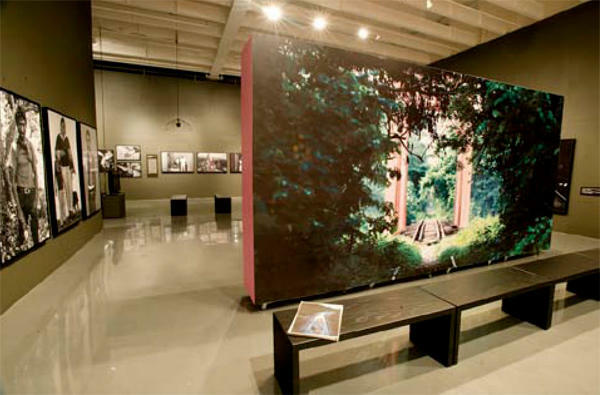Isabel Muñoz
Centro Cultural Español, Miami
The Spanish photographer Isabel Muñoz knew “La Bestia” (“The Beast”) closely and portrayed its entrails. This was the name given by immigrants from Central America – mostly from Honduras, Guatemala and El Salvador – to the freight train which has, for years, transported those who traveled northward through Mexico, trying to reach the border with the United States as stowaways.

It is a beast which can, at any moment, shake off those illegal immigrants that board it, pushing and shoving each other on its roof or in the minimum space available, while they embark on this journey urged by despair, ready to risk everything − even their own lives − in order to reach the imagined territory that will allow them to live a decent life. But the train often opens the doors to a nightmare, and it is in that threshold that the photographer has established the vortex of the traveling series that is currently being shown in
In territories where human beings are always at risk, Muñoz has portrayed − without great fuss, without ever judging − the marks of certain social rites on the human body, such as the marks of wounds that the young men belonging to the Maras, who posed for her in a prison in El Salvador, inflict upon themselves. In Cambodia she photographed girls who are victims of human trafficking and prostitution. In “La Bestia”, the sense of revealing complicity that the portrait establishes combines with the action report to condense the narration of a nightmare-journey towards the void of uncertainty. Her camera takes risks, but it is never obtrusively invasive. “I have never taken a portrait without the person’s consent,” Muñoz assures. She has found the way to safeguard that dignity that makes it possible to put oneself in the other’s shoes, at least during that fleeting instant when the gaze encounters the lens, revealing the story behind it.
Thus, many of her characters face us, while the photographer establishes the documentary context for the image in the general visual planes. And it is precisely in this revealing portrait, pierced by fear and despair, that the series reaches its moment of greatest credibility and dramatic quality. If something characterizes the extensive oeuvre featured in “La Bestia”, it is the peculiar way in which it constructs a reflective and confrontational photojournalism that combines the ability to summarize and the abstraction of a studio portrait − as in the case of Etiopía and Drag Queens, for instance − and the narrative power of the testimonial report. As a matter of fact, the show is exhibited jointly with the video produced by artists Andrés Villalobos and Eduardo Olivera, as well as with the stories by Oscar Martínez, all of whom accompanied Isabel Muñoz in her journey.
In this way, the image reconstructs the story and vice-versa, in an effective “give-and-take” that functions as part of the curatorial project. But both the wall texts and the videos and images converge at a stance that is as professional as it is ethic: in this unsafe trip, threatened by dangerous gangs, they share the other’s experience in order to give testimony to a frontier that is not only geographic but also human, and which faces us with the depth of the migratory crisis, the most fragile and disputable limit of the global village.







